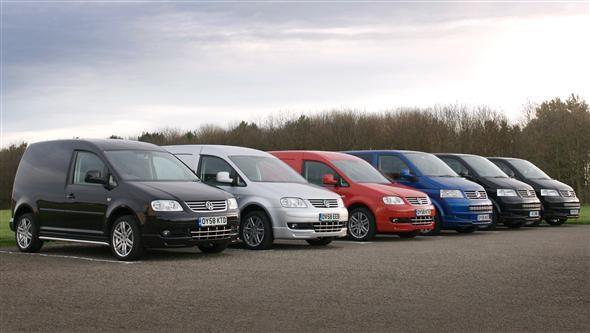Beavertail – Also known as dovetail, the beavertail is a popular flat-bed truck used for transporting other vehicles.
Box van – A van with a cuboid-shaped load area.
Car derived van – A van based on the design of a car, for example a Ford Fiesta.
Chassis cab – The most basic van you can buy, a chassis cab comes with a cab and an open ladder chassis ready to be converted into a tipper, dropside or box van.
Conversion van – A van modified by a third party company. For instance a van converted for use as an ice cream van.
Crew van – A van with an extra row of seats so it can carry more crew.
Curtainside – A van with a roof and curtain sides made from canvas, which can be pulled back to facilitate easy loading.
Double cab – A van with two rows of seats for more crew-carrying capacity.
Dropside – These have shallow sides which drop down for easy access and an open top. Most commonly used in the building and gardening industries.
Flatbed – Commonly used for loads requiring a crane, a flatbed has no sides or roof.
Four-wheel-drive – A van with all four wheels driven by the engine to help with traction.
Livestock – A van build to transport live animals, usually for farming activities.
Luton van – A van with a box style, but extending over the cab for even more load space. Popular with removal firms.
LWB (Long Wheel-Base) – The wheelbase is the distance between the middle of the front wheel and the middle of the rear wheel.
MWB (medium wheel-base) – The wheelbase is the distance between the middle of the front wheel and the middle of the rear wheel.
Microvan – A small van with a box-like body and more often than not a large board at the back.
Minibus – A van converted into a minibus for passengers.
Panel van – A van with a rigid, non-articulated body. A wide range of sizes and shapes are available, and this is the most popular type of van on UK roads.
Pick up – A vehicle specifically designed with a pick-up load area at the back and either a single or double cab.
Single cab – A van with one row of seats, carrying up to three crew members.
Straight truck – A permanently-attached tractor and van combination.
SWB (Short Wheel-Base) – The wheelbase is the distance between the middle of the front wheel and the middle of the rear wheel.
Tanker – A truck built exclusively to carry fluid materials.
Temperature-controllled – A vehicle with a temperature-controlled atmosphere in the load area, designed for transporting chilled foodstuffs or similar.
Tipper – Similar to a dropside van, a tipper has a hydraulic ram which pushes the front of the load area up, ‘tipping’ the load onto the floor behind the van.
Vehicle transporter – A van built specifically to transport other vehicles.
Just so you know, we may receive a commission or other compensation from the links on this website - read why you should trust us.




